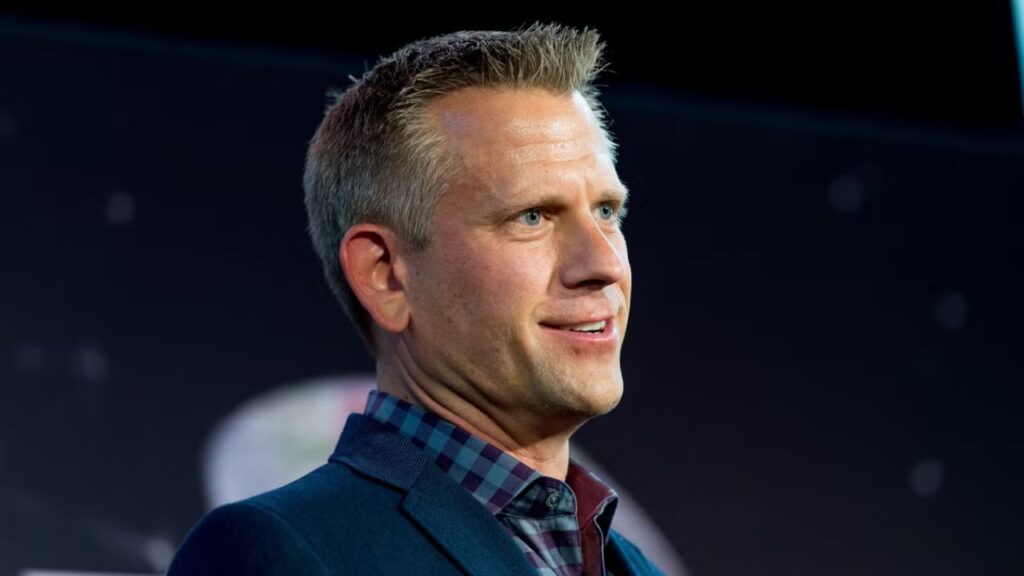John Brenkus, the charismatic host and creator of Sport Science, left behind more than just a legacy of groundbreaking television when he passed away in May 2025. His financial footprint—built through production companies, Emmy-winning shows, and digital ventures—paints a picture of a man who was as savvy in business as he was passionate about sports and science. While exact figures of his net worth remain private, piecing together his career moves, company valuations, and industry impact gives us a compelling estimate.
Brenkus’s wealth was anchored in two major ventures: BASE Productions and Brinx.TV. BASE, co-founded with Michael Stern, was a powerhouse in reality TV and sports programming, producing hits like Fight Science and Sport Science for networks like ESPN, Fox Sports, and National Geographic. The company’s signature blend of CGI, motion capture, and athletic analysis wasn’t just innovative—it was lucrative. Sport Science alone racked up six Emmy Awards, and its sale to ESPN in 2010 (though it left Brenkus grappling with depression) likely netted him a significant payout. By 2025, BASE’s library of content and ongoing projects would have contributed millions to his estate.
Then there’s Brinx.TV, Brenkus’s brainchild launched in 2013. This digital platform was his post-ESPN reinvention, blending sports analysis, live events, and even betting content. Shows like The Goat Code (marketed as “Sport Science on steroids”) and partnerships with organizations like the American Cornhole League and the World Downhill Skateboarding Championship expanded Brinx.TV’s reach. While the platform wasn’t as mainstream as Netflix or ESPN+, its niche appeal and dedicated audience—coupled with sponsorships and ad revenue—would have added a steady stream to Brenkus’s income.
The Hidden Figures: Book Deals, Podcasts, and Personal Investments
Beyond TV production, John Brenkus diversified his portfolio in ways that aren’t always visible on paper. His 2010 book, The Perfection Point, was a New York Times bestseller, exploring the limits of human athletic performance. Royalties from the book, along with speaking engagements tied to its themes, padded his earnings. Then there was The Brink of Midnight, his podcast featuring interviews with stars like Ray Lewis and Marshawn Lynch. Though it ended in 2018, its 100-episode run likely generated ad revenue and boosted his personal brand.
Less publicized were his personal investments. Brenkus had a knack for spotting trends—like his early involvement with DC band Emmet Swimming, for whom he shot music videos before they signed with Sony. Whether he held equity in other startups or invested in sports tech (a natural fit given Sport Science’s focus) isn’t public knowledge, but it’s safe to assume he didn’t just park his money in a savings account.
You Might Like: Is Kobe Bryant’s Wife Vanessa Bryant Really Pregnant in 2025? The Truth Revealed!
The Final Calculation: Estimating Brenkus’s Net Worth
Pinpointing Brenkus’s exact fortune at the time of his death is tricky—he wasn’t a billionaire tech mogul, nor did he flaunt his wealth. But here’s a reasoned guess: Between BASE Productions’ success, Brinx.TV’s growth, book sales, and residuals from Sport Science’s enduring popularity (ESPN still aired reruns), his 2025 net worth likely sat in the $10–$20 million range. That’s not counting personal assets like his Park City, Utah, home or royalties from The Brink of Midnight band’s viral Christmas song.
Also See: Valerie Mahaffey’s Family: All About Her Husband Joseph, Daughter Alice, and $1M Net Worth
What’s clearer, though, is that Brenkus’s real wealth wasn’t just monetary. His ability to merge science, sports, and storytelling created a blueprint for sports media—one that inspired countless creators. And while depression tragically cut his life short, his financial and creative legacy ensures his influence won’t fade anytime soon. For fans and aspiring producers alike, John Brenkus remains a case study in turning passion into profit.
